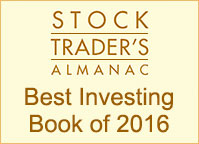


Volatility index VIX sets new higher high today

VIX volatility index soars after Federal Reserve minutes released

Could it be? An upward trend in VIX volatility? Not investible yet, though
I’m not calling it a trend yet. Every time over the past six months that it has looked like volatility on the Standard & Poor’s 500 stock index has been ready to move up in a significant way, the move has been a head fake. And volatility as measured by the CBOE S&P Volatility Index (VIX) has headed down again to hover near historic lows once more. The VIX hasn’t been above 14 since December 30, 2016 (at 14.04) and for 2017 it’s been stuck around 11 or 12. From 1990 to October 2008, the VIX averaged 19.04. The 200-day moving average for the last 10 years is 20.15. It’s one of the puzzles of the current market, one that I’ve written about repeatedly, why this measure of volatility remains so low when other volatility indexes come in much higher and when the economic and political background seems so volatile.
I am looking for volatility as measured by the VIX to return to something like its historical average.
The not so minor question is “When?”
And I’m starting to see what might be a trend.
Here’s what I’m seeing in the VIX chart for 2017.
There’s certainly a string of higher lows, which is usually a sign of an upward trend. On January 27, the VIX hit a low of 10.58. On February 14, the low was 10.74 and then on March 3 the dip was to 10.96. On March 16, the drop hit 11.21 and then on March 29 the VIX fell to 11.49.
What you want to see on a chart with higher lows, of course, is a series of higher highs. The pattern for the VIX isn’t quite as strong on this side of the chart. On February 2 the VIX hit a high at 11.93. Then came 11.97 on February 15 and 12.92 on February 28.
Then come two data points that put the higher highs trend in jeopardy. On March 9 the high was just 12.30, below the February 28 high of 12.92. And on March 14, the VIX stalled at that same 12.30.
The VIX did manage a new and higher high of 13.12, above the February 28 high, on March 23.
On Friday the VIX closed at 12.37. That’s obviously below the March 23 high of 13.12. For confirmation that an upward trend actually exists we need to see the VIX move over 13.12 sometime in the next week or two. If I see that kind of move, then it may be time to put a little money to work behind
Stay tuned.

More life in the VIX, but I wouldn’t yet say we’re seeing a rise in volatility

If not the VIX, what to watch for signs of volatility? I’m adding gold to my Volatility Portfolio
The most widely followed volatility measure, the CBOE S&P 50 Volatility Index (VIX), is going nowhere. The VIX, commonly known as the fear index, closed at 11.37 today, February 6 and it is stuck below both its 50-day moving average of 12.09 and its 200-day moving average at 14.01.
Which doesn’t mean there’s no volatility or no fear in the markets. It’s just not reflected in the market for puts and calls on the S&P 500.
Other measures, however, are flagging uncertainty in the financial markets. Some politically-inclined analysts are, for example, looking at the gap between the VIX and the Global Economic Policy Uncertainty Index. It’s now at its highest level on record. Others, unwilling to give up on the VIX completely, are looking at the CBOE Skew Index, which measures the price of buying protection against more dramatic moves in the S&P 500. The VIX itself may not be signaling an increase in worry but investors are willing to pay to hedge the more extreme if less likely downside outcomes in the tail of the bell curve.
And then gold. We all know that gold doesn’t go up when interest rates are expected to rise–except when expectations for inflation–which is good for gold–and worries about market uncertainty outweigh expectations for rising inflation.
And, strikingly, that’s where we seem to be now. The yield on the 10-year U.S. Treasury has climbed to 2.44% from 1.77% since the November election.
But gold, rather than wilting is showing solid strength. Gold and silver ETFs are among the best performers on a 1-month and year-to-date basis on fears that inflation in the United States and other economies, such as Germany, is showing signs of breaking out of its target bounds. Gold mining stocks tend to be more volatile than the price of gold bullion ETFs (such as GLD, the SPDR Gold Trust) since the costs of miners are relatively fixed making a change in gold prices a huge deal for their bottom lines. The Juniors are more volatile than the bigger companies in the VenEck Vectors Gold Miners ETF (GDX) because their balance sheets tend to be more leveraged and the stocks themselves are riskier. Decide for yourself how much risk you want to add to your portfolio. The VanEck Vectors Junior Gold Miners ETF was up 7.72% today. The senior ETF climbed “just” 3.67%.
Before we leave the subject of gold and volatility, however, there’s one pattern worth mentioning. Most of the time, indeed, gold falls when interest rates rise. Logical. However, when inflation fears are enough to overwhelm fears of an interest rate increase, the combination can signal a negative move in the market. Three consecutive quarters of rising benchmark bond yields and rising gold prices preceded previous market falls including the 1973-1974 bond market crash and Black Monday in 1987, Chris Flanagan at Bank of America told Bloomberg. The yield on the 10-year Treasury has climbed to 2.44% from 1.77% since the November election. Gold, which has been among the best performers in the shorter term, has moved sideways in that longer period.
Something to watch.




